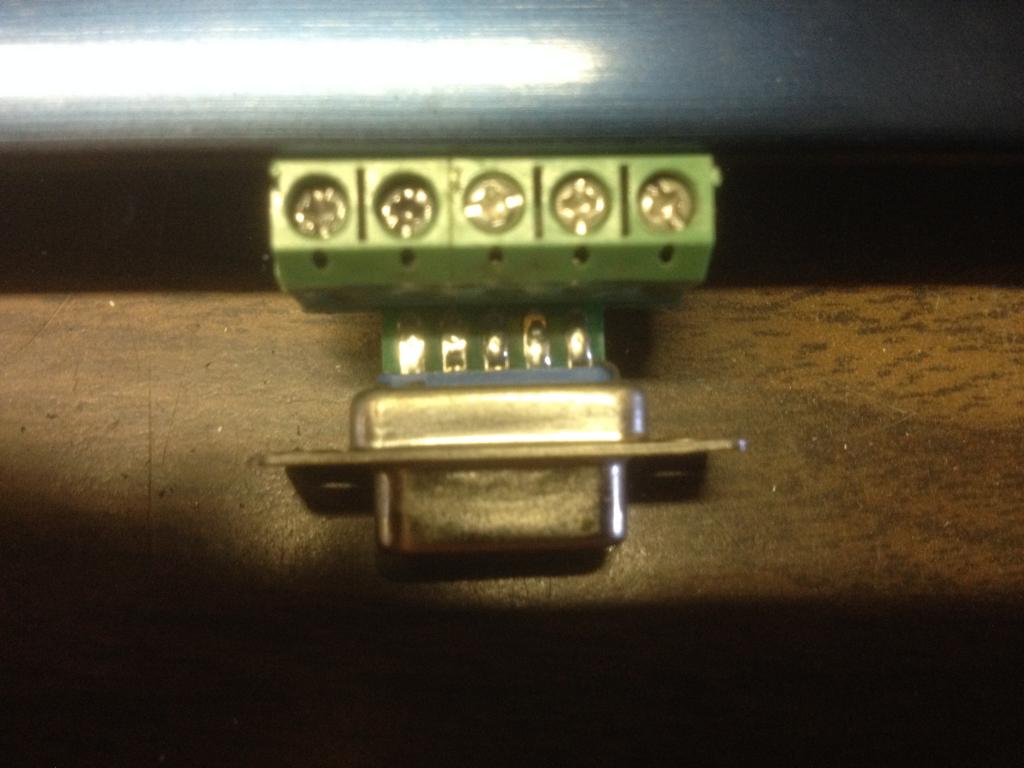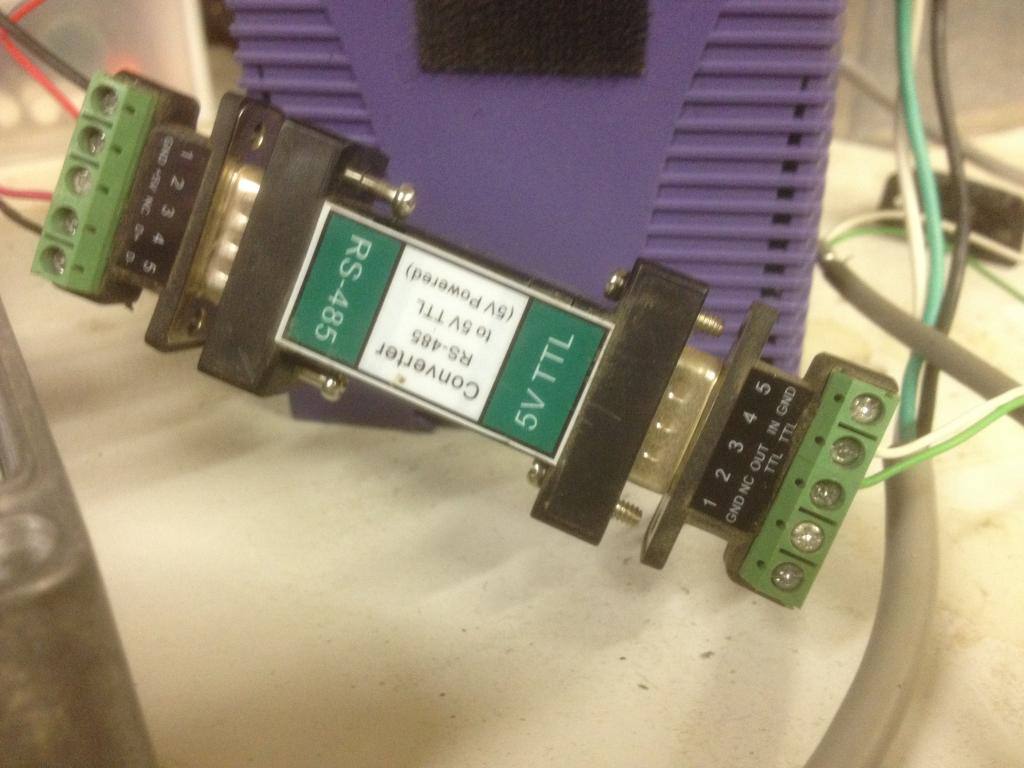Max 485?
Hello.
I have a project that uses a TTL to 485 converter. I have spent more then enough time tracking down open connections on the current converter. Project: VB.net <-> Xbee <-> <-> Xbee <-> Custom Prop board <-> TTL-485 converter <-> VFD. With so many components there is quite a few things to check when communications fail. The most frustrating thing is when the failure is a poorly soldered connection on the ttl to 485 converter DB9 to terminal block connector! I am happy to accept that I have a fault in my code, but when I spend time trying to correct the timing between different entities, and find that a commercial product was not soldered correctly is the reason for my problem... My.Settings.traVis = frustrated.
I did a continuity test on the 485 connector and found the +5 connection open. Here are a few photos after I cut the rubber off of the connector, and a photo of a working unit.
I remember seeing many posts about the Max232 chip here and was wondering if there is an equivalent recommended chip for Propeller to RS 485? I am working on a complete revision to a custom board, and would like to have 485 conversion directly on the PCB.
Thank you very much.
traVis.
I have a project that uses a TTL to 485 converter. I have spent more then enough time tracking down open connections on the current converter. Project: VB.net <-> Xbee <-> <-> Xbee <-> Custom Prop board <-> TTL-485 converter <-> VFD. With so many components there is quite a few things to check when communications fail. The most frustrating thing is when the failure is a poorly soldered connection on the ttl to 485 converter DB9 to terminal block connector! I am happy to accept that I have a fault in my code, but when I spend time trying to correct the timing between different entities, and find that a commercial product was not soldered correctly is the reason for my problem... My.Settings.traVis = frustrated.
I did a continuity test on the 485 connector and found the +5 connection open. Here are a few photos after I cut the rubber off of the connector, and a photo of a working unit.
I remember seeing many posts about the Max232 chip here and was wondering if there is an equivalent recommended chip for Propeller to RS 485? I am working on a complete revision to a custom board, and would like to have 485 conversion directly on the PCB.
Thank you very much.
traVis.





Comments
Check Maxim, Linear, and Intersil ?
(This probably is not a Prop2 question, but a General one)
Thanks.
P.S. I am however, proud to have my first post in a Prop2 thread!
Jim
logic output on receive can be safely schottky-clamped to 3.3V rail as it can only source a few mA above 3V. Well from
what I make of Figure 11 in the datasheet: http://www.farnell.com/datasheets/1718787.pdf
RS422/RS485 were intended to replace RS232 as these drivers provide longer distances with greater noise immunity. But to do full-duplex, you nee 4 wires in two twisted pairs.
I believe the MAX485 is a transceiver that will switch back and forth between send and receive over one twisted pair. There are chips that can be powered by 5v or by 3.3v.
At first, it may seem handy to just have one twisted pair; but for most duplex use, the 4 wire, 2 twisted pair set up is superior and closer to what you expect from RS232.
MAX1487-MAX491.pdf
Here is a PDF of the Maxim product line. The SNxxxxx devices also include RS232 and RS422/485 drivers, receivers, and transceivers. Be very care to get the right part number for the right use.
If you go to Futurlec.com, they have a nice catalog with PDFs for all these devices. It will save a lot of poking around.
These half duplex transceiver devices must know when to listen and when to transmit. That adds an extra layer of complexity to both the programing and the construction. You need at least one extra i/o to toggle the send/listen feature. And you need to design your connection protocol as a Master/Slave. Only one device can really decide when communications should start. And with only one twisted pair, transmission collisions are possible.
In a 4 wire scheme, a half-duplex device (like a BasicStamp2) can connect to a full-duplex device (like a PC) and still get the attention of the PC while it is trying to send to the BasicStamp2. It may be a bit sloppy, but something gets through.
If you have a remote device that must send messages without a request from the PC, such as an alarm message; having the 4 wire full-duplex is important. You would need two MAX485 chips to make a full duplex and one would be permanently locked in received while the other is permanently locked in transmit. It can be done that way. Or you can buy another chip that provides for full-duplex.
In sum, when in doubt... buy RS422 full-duplex adapters and chips, not the RS485 half-duplex chips. Canbus ins about the only setup that uses the RS485 half-duplex well.